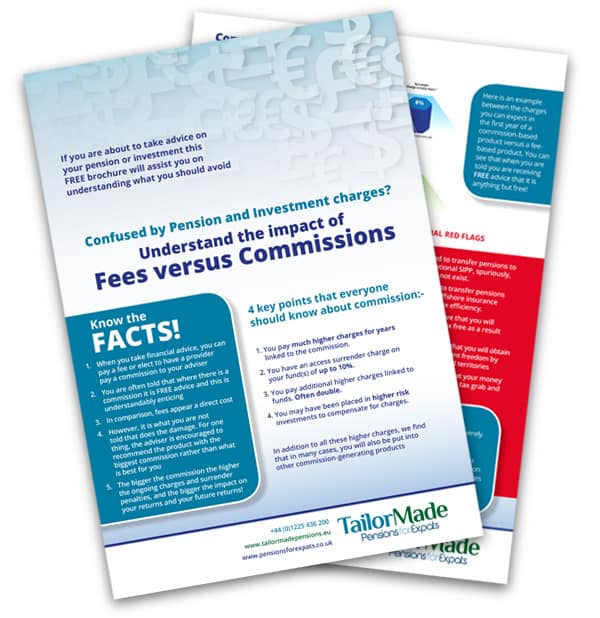
With inflation affecting everything from potato chips to household appliances, it seems every single thing we buy is higher than ever before, and consumers across the globe are having to adjust to the “new normal.”
Naturally, all the focus is zeroed in on inflation, what it means, and what it will mean for the bottom line going forward.
In the U.S., the annual inflation rate as gauged by Personal Consumption Expenditures Prices Index (PCEPI) — the preferred metric for policymakers — was 6.4% for the 12 months ended January 2023 after rising 6.5% previously, according to the U.S. Labor Department (The next inflation update is scheduled for release on March 14).
As has been the case over the last four quarters, this means the U.S. Federal Reserve (Fed) will likely continue to raise interest rates for the foreseeable future as it’s still well above the central bank’s 2% long-term target.
Since data showed higher-than-expected inflation, all signs are pointing to price growth remaining higher than average for the coming year with food prices expected to grow more slowly this year than last year but, at 7.9%, it’s still well-above historical average rates.
Earlier this week markets were sent tumbling after Fed Chairman Jerome Powell, citing the January data, cautioned interest rates are “likely to be higher” than policymakers had anticipated in order to slow an overheated economy.
Raising Interest Rates Remains Key Strategy
Although Powell did not specify how high he thinks rates ultimately will go, the Fed had slated the terminal rate at 5.1% in its December estimate.
Since the central bank is the one that is tasked with getting inflation under control while trying to avoid a deep economic recession, some analysts now expect that terminal rate could be higher – possibly up to 5.4%-5.5%.
The Fed has undertaken a series of interest rate hikes to tamp down inflation – raising its benchmark fund rate eight times over the past year to its current targeted level between 4.5%-4.75%.
The funds rate sets what banks charge each other for overnight lending and influences several other consumer debt products such as mortgages, auto loans, and credit cards.
The chairman also acknowledged the interest rate increases in rapid succession have some analysts concerned because it “takes a while to see the full effect of those increases on the economy” and that has the Fed keeping a close eye on the service sector.
Although Powell noted some progress on inflation for areas such as housing, he warned “there is little sign of disinflation” in the critical category of services spending (excluding housing, food, and energy).
UK, EU Also Battling Stubborn Inflation
Meanwhile, across the pond in the UK, the Consumer Prices Index including owner occupiers’ housing costs (CPIH) rose by 8.8% in the 12 months to January 2023, down from 9.2% in December 2022, according to the econometric models from the Office for National Statistics (ONS).
The largest upward contributions to the annual CPIH inflation rate came from housing and household services (mainly from electricity, gas, and other fuels), and food and non-alcoholic beverages.
On a monthly basis, CPIH fell by 0.4% in January 2023, but was little changed in January 2022.
In the long-term, the UK Inflation Rate is projected to trend around 2.50 percent in 2024 and 1.70 percent in 2025.
In Europe, the EU Commission’s 2023 Winter Forecast projected that although the economy will likely avoid a recession because risks to growth are broadly balanced, headwinds persist and “uncertainty remains high.”
Headline inflation in the EU is projected to fall from 9.2% in 2022 to 6.4% in 2023 and to 2.8% in 2024, according to the Commission.
In the euro area, it’s projected to decelerate from 8.4% in 2022 to 5.6% in 2023 and to 2.5% in 2024.
The highest inflation rates in Europe overall were recorded in Hungary, Latvia and Lithuania — all remaining above 20%.
The EU also warned external demand could turn out to be more robust following China’s re-opening – which could fuel global inflation.
With All the Inflation Woes, What Can Consumers Do?

Inflation can be a challenging time for all of us, but there are ways to cope with it. According to Experian, here are a few basic strategies that can help you ride out the storm:
- Determine how much inflation is affecting you.
- Make and monitor your budget.
- Find ways to reduce your monthly expenses.
- Save money at the grocery store by buying in bulk or using coupons.
- Make sure that your cash is earning some sort of interest.
- Consider investing in stocks or other assets that tend to perform well during inflationary periods – buy stocks that allow you to keep up with inflation or, ideally, outpace it (e.g., supermarkets and food suppliers who are reaping the extra profits).
- Adjust your budget to cut expenses anywhere you’re able to help you weather higher costs.
- Dine out less frequently and drive less whenever possible.
- Rely more on credit cards but commit to not using them excessively or you could end up in an even more serious situation.
- Look for a better-paying job if possible.
- Move to a cheaper location if possible.
And, principally, economists say the most effective thing consumers can do to fight inflation now is buy less until decreasing demand meets up with now increasing supplies.
Understanding Inflation Projections and Their Impact on Your Budget
To see exactly how inflation is affecting your household costs in the UK, the ONS has created an online inflation calculator so you can see how increases in the cost of living have affected you in the past year.
If you’re in the US, UK, or Japan the Financial Times has also created an interactive Personal Inflation Calculator where you can enter your monthly spending in several different categories to estimate how much your household costs have changed and calculate how inflation is affecting your bottom line.
Resources to Help
To help you save money, Shopify has compiled an extensive list of Comparison-Shopping Tools that allow you to compare pricing, shipping options, and provided services from multiple retailers on a single webpage, and identify the merchant that offers the best deal.
If you live in the US, MyGroceryDeals will let you browse all sales and featured items from over 300 grocery retail chains, drug stores, and mass merchandisers, representing 80,000 retail stores in all 42,000 ZIP codes across the country.
If you live in the UK, Trolley provides free online price comparisons for groceries and allows you to make smart shopping lists and find out which stores near you are the cheapest to get your regular weekly goods.
###
The views expressed in this article are not to be construed as personal advice. You should contact a qualified and ideally regulated adviser in order to obtain up to date personal advice with regard to your own personal circumstances. If you do not then you are acting under your own authority and deemed “execution only”. The author does not accept any liability for people acting without personalised advice, who base a decision on views expressed in this generic article. Where this article is dated then it is based on legislation as of the date. Legislation changes but articles are rarely updated, although sometimes a new article is written; so, please check for later articles or changes in legislation on official government websites, as this article should not be relied on in isolation.
Related Stories:
- UK House Prices Predicted to Fall as Interest Rates Rise
- Bank of England: We Will Raise Interest Rates Again
- UK Inflation Flips in Surprise Reversal Upward
- 2023 Rings in with Markets Eyeing the Fed’s Next Move
- BREXIT ‘22? As U.K. Costs Skyrocket, Brits Could Find Relief Moving Abroad
Share this story






